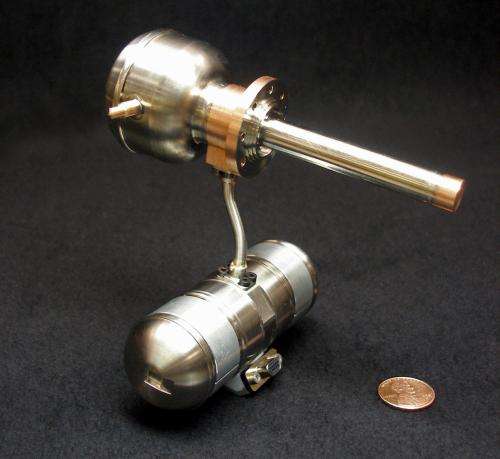Weighing just over 11 ounces, and less than four inches long in greatest dimension, the microcryocooler is expected to have an operating life of 10 years or more.
Scientists and engineers at the Lockheed Martin Advanced Technology Center (ATC) have developed the lightest satellite cryocooler, (cooling system) ever built. The breakthrough is seen as a game-changer in the design of affordable, advanced-technology flight systems, as it costs up to ten thousand dollars a pound for a satellite to orbit the Earth.
Known as a microcryocooler, the new cooling system weighs approximately 11 ounces, three times lighter than its predecessor, and is expected to have an operating life of at least ten years. The microcryocooler operates like a refrigerator, drawing heat out of sensor systems and delivering highly efficient cooling to small science satellites orbiting the Earth and on missions to the outer planets.
"Temperatures as low as -320 F are required for infrared instruments and the coolers must operate with minimum power and long lifetimes," said Ted Nast, Lockheed Martin fellow at the ATC in Palo Alto. "That is why we constantly pursue a deeper understanding of the dynamic effects of temperature on cutting-edge technology and develop new systems, like our microcryocooler, that will perform successfully within the demands and constraints presented by severe, operational thermal environments."
Provided by Lockheed Martin























